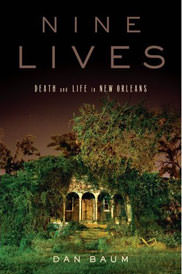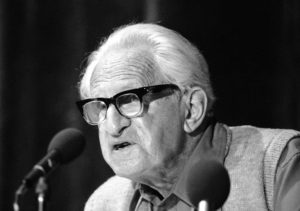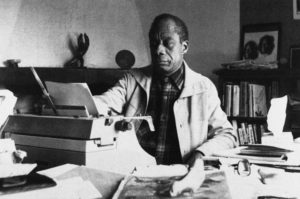Larry Blumenfeld on New Orleans After Katrina
Why are New Orleanians -- along with people from all over the world who continue to flock there -- so devoted to a place that was, even before the storm, the most corrupt, impoverished and violent corner of America? "Nine Lives" by Dan Baum helps provide an answer.Why are New Orleanians so devoted to one of the most corrupt, impoverished and violent corners of America?
I first met Ronald Lewis, a retired streetcar-track repairman with a homemade culture museum in his Lower Ninth Ward backyard, on the second anniversary of Hurricane Katrina. He told me he didn’t care much about anniversaries. “But if it helps people understand my life and the lives of other people here in New Orleans,” he said, “if it makes them think about why we’re here and we won’t leave, let ’em have an anniversary.”
Yet much of the coverage of New Orleans since 2005 has been about anything but the lives of Lewis and his neighbors. I’ll never forget the Rev. Charles Duplessis of the Mount Nebo Bible Baptist Church, standing not far from Lewis’ place — wife by his side, baby in his arms — watching an anchorwoman in a setup shot framed by their devastated home. “The producer said he doesn’t want us in the picture,” he told me.
Those ruined homes made for good, needed copy and stunning background; the deeper stories, often overlooked, are the lives lived in them. Real concern for what may be (or already has been) lost in New Orleans neighborhoods begins with appreciation of what was there to begin with.
Lewis shows up on the very first page of Dan Baum’s “Nine Lives: Life and Death in New Orleans,” as a 14-year-old boy growing up on Deslonde Street in the Lower Ninth, trying to make sense of the devastation of an earlier flood resulting from a levee failure, after Hurricane Betsy, in 1965. (“These were Ronald’s sacred places, he now realized: he’d been in and out of these houses his whole life,” Baum writes. “Desecrated they were. Thoughtlessly trashed.”)
“Ask someone for directions in New Orleans,” singer Irma Thomas once told me during an interview, “and you’ll get a life story.” It’s true: Everyone’s got a compelling narrative, rich with both idiosyncratic personal details and the city’s essential truths. Better yet, more often than not, each is told devastatingly well. Baum, a former staff writer for The New Yorker, here collects and interweaves nine such tales, in part to relate what he found largely missing from the many column-inches of post-Katrina coverage — “the essentially weird nature of the place where it happened.” This book is nothing like Baum’s gripping and often insightful reporting from New Orleans, which nevertheless failed on that count too. Here, his voice subsumed within these lives, Baum gets at that weirdness, not to mention his own deep affection for the place.
Including Lewis, Baum’s characters span the extraordinarily disparate lives lived in New Orleans and trace the contours of the city’s political and social structure.
Joyce Montana, a shy woman with a squeaky voice, is the proud wife of Alison Montana, better known as “Tootie” and revered as “Chief of Chiefs” among Mardi Gras Indians. Billy Grace, who was born into a privileged Uptown existence, but whose father, a former bank teller, “never let him forget they were relatively recent arrivals,” ends up King of Rex, a Mardi Gras parade krewe that defines the fabric of Uptown society. Wilbert Rawlins Jr., whose father hauled sacks of coffee by day and played drums for Irma Thomas by night, becomes surrogate father to dozens of students as a high school band director. Belinda Carr, who as a little girl in the Lower Ninth Ward dreams of college and wants “out of this life so bad she could taste it.” (Somewhere in the book’s midsection, after two failed marriages, she meets and marries Rawlins.) Dr. Frank Minyard, a successful gynecologist and a baron of the city — “welcomed like a son in all the best places of the Quarter, known to everybody, loved by all” — finds deeper meaning as a civic-minded coroner who occasionally plays trumpet. We first encounter Joann Guidos as John, a high school football player with a passion for his mother’s underwear: After his marriage unravels following an incident involving a vibrator and an overnight hospital stay, we follow the transition to Joann, a pre-operative transsexual whose neighborhood bar, Kajun’s, becomes a lifesaving outpost after the flood. Tim Bruneau, a tough-minded cop who revels in “boot-in-the-ass” police work, discovers a measure of compassion via a life-threatening injury and his own Katrina experience.
After a childhood in Southern California’s San Fernando Valley with “a big house, TV, nice clothes,” all courtesy of a hard-working dad with roots in New Orleans, Anthony Wells bounces from temporary job to prison and back. His is the most authentic voice in Baum’s because it comes unadulterated — straight quotes, in italics. And why would any writer dilute or transmute such a colorful telling of one’s own life, punctuated when needed with a “you feel me?” Wells describes his first trip to New Orleans this way:
“It’s all jam-packety, pretty old houses lined up one beside the other, each one a different color, with curlicues and flowers, and, man, streets just full of people. White people, black people, mixed-race people, all jumbled up together and walking. Music right out on the sidewalk, and I don’t mean like one nigger with a guitar, but a whole band and drum set and everything, like the whole city is a big party. I’m looking out the window, eyes as big as saucers — eight years old — and I’m thinking, this is a whole different way to be a Negro; I’m thinking, this is where daddy gets his groove.”
Each story traced by Baum addresses in some way the question that often goes unasked: “Why come back?” On this point, Wells is especially instructive:
“I was connected, you feel me? It was like living in the Bible wit the begats: ‘My auntee is married to your mother’s auntee’s second cousin.’ Then I go home to San Fernando, and I’m a stranger. Nobody knows my name. Life is all cut up.”
For the first 60 or so pages, Baum’s narrative seems similarly cut up: He presents it in the fast-paced, jump-cut fashion familiar to fans of filmmakers John Cassavetes and Robert Altman, or to anyone who’s watched MTV. Let’s face it: Such strategy can annoy. And so it seems here, until gradually the pieces begin to sing, individually and in unison, with a common rhythm and drive, not unlike the brass-band music that underscores a good deal of New Orleans life and pops up in references throughout the book. Baum’s stories work like good fiction. There are transformative moments that change a character’s course: For John Guidos, it’s sparked by the tease of a classified ad in Penthouse Variations that read simply, “Like to dress? Write the Sorority.” For Tim Bruneau, it’s a short trip over a windshield while chasing down a thug.
The differences between experiences of rich and poor, black and white, uptown and downtown come clear through these lives, but so do the parallels. Despite the acceptance letter from Southern University pinned to her wall, Belinda Carr finds herself “another Lower Nine teen with a baby on her hip.” Like Carr, Billy Grace had his sights set on something else. But soon after college, marriage and a child, “If Billy still harbored dreams of making it in the big world outside New Orleans, those were now well and truly over,” Baum writes. “The Rex mansion’s gravitational pull had drawn him inside. … ”
Joyce Montana learns to sew and bead elaborate Mardi Gras Indian suits from her husband, following a tradition passed down almost exclusively by men. And Billy Grace notices that, in New York, “it was always the women who seemed to invite them places and organize get-togethers. Their husbands just seemed to go along. He realized then how different was New Orleans from the ‘real’ world. With all the events on a Mardi Gras krewe’s calendar, it was the men of uptown New Orleans who piloted their families’ social calendars — the balls, the coming-outs, the luncheons — not the women.”
At one point, Baum describes Grace, captain of Rex, meeting Tootie Montana, Chief of Chiefs among Mardi Gras Indians. Yet the moment proves fleeting, meaningless: Despite their parallels, these two traditions represent New Orleans universes that rarely connect in a substantive way.
The primacy of culture as a binding and elevating force in New Orleans is one prominent theme. After Joyce Montana’s son Darryl lands in prison, he talks to his mother about Tootie’s Mardi Gras Indian tradition. “Before they sent me up here, Tootie told me, ‘Boy, you need to get some feathers on,’ and I wish I’d listened. I might not be here if I had.” As a high-schooler with bulk and talent enough to play both football and sousaphone, Wilbert Rawlins Jr. “could see that while everybody at Colton went to games, they wandered around the stands during the ball playing, talking and playing grab-ass. But they stopped moving and listened up close when the band stated playing.”
Decades later, as a band director, Rawlins is forced to confront a reality surrounding his chosen path when he confronts a teenager heading down the wrong path.
“Mr. Rawlins, how much you make?” the kid asks.
“I take home about a thousand dollar every two weeks.” Wil said. That would rock them back, he thought.
Brandon snorted. “Shit,” he said. “I made that last weekend.”
Baum doesn’t give us a dissertation on the wretched state of the city’s public schools. He places us in the car with Rawlins and Theodore Jackson, the new principal of George Washington Carver middle school, when Jackson writes a bogus check for $83,000 to cover a truckload of textbooks. (“I just couldn’t face another day with those raggedy-ass books,” Jackson says.)
And Baum needn’t paint corruption among city officials with a broad brush: We understand how the city is wired when a police officer — a close friend of Minyard’s — gets in trouble. Minyard thinks: “To come to the defense of a cop found naked in bed with a woman while on duty — with cocaine in his pocket, no less — would be politically risky. On the other hand, if a guy like Joe couldn’t make a little mistake in New Orleans, where could he?” Frank “saves Joe’s ass” out of personal duty, but also simply because he can. But when another officer friend is implicated in the beating death of a suspect, Minyard is put in the uncomfortable position of defending a tarnished friend through a deeper and more visible crisis.
Few writers would dare the sort of operatic climaxes that regularly punctuate New Orleans life. Besides, Baum wouldn’t be likely to have dreamed up a scene like the one in the City Council chamber when Tootie Montana, while protesting police mistreatment of Mardi Gras Indians, falls dead of a heart attack. (His fellow chiefs break into a traditional song, “Indian Red,” with a refrain that goes, “He won’t bow down, not on that ground.”)
The floods that followed the levee breaches in Hurricane Katrina’s wake come two-thirds of the way into Baum’s book: By then, Baum has told us enough to justify the idea that this is a defining episode but not the defining episode in these lives, or even in Baum’s narrative.
When Anthony Wells describes the onset of Katrina — “What happened was, the wind started up long about nightfall” — his account sounds something like the opening lyrics of Randy Newman’s “Louisiana 1927,” about another great flood and failure (“What has happened down here is the winds have changed”).
In Baum’s accounts of Katrina, even familiar images prove newly gripping. Joyce Montana, in a Texas motel room, sees the Circle Food Store’s iconic facade surrounded by chest-high water. Belinda Rawlins recognizes those televised figures waving for help on a rooftop as friends and relatives. Ronald Lewis hears a radio commentator say, “The whole Ninth Ward is gone”; later, after being sought out by NPR’s Steve Inskeep, he visits his flooded-out neighborhood and announces to listeners: “I’m not leaving my home.”Writing in The New Yorker in 2006, Baum had already told the story of Tim Bruneau driving around with the body of a 24-year-old woman rolled up in a waterbed mattress in the back seat of his squad car; with the morgue underwater and the hospitals closed, there was nowhere else to put her. Indelible as that image was in Baum’s previous piece, here, told from Bruneau’s point of view, with imagined dialogue between cop and corpse, it offers a window into Bruneau’s mind through this otherworldly ordeal. It’s riveting stuff.
Nearly all of Baum’s characters emerge as heroes of some sort in the wake of the flood — none more so than Frank Minyard, who finds himself swimming toward his coroner’s office. But this time, Minyard’s well-placed connections fail him. “Where are the bodies?” he asks at the makeshift morgue, and then watches as a succession of officials proves impotent to act: FEMA; the 82nd Airborne; the National Guard; the Louisiana State Police. Not until a representative of Kenyon, a subsidiary of Service Corporation International, the biggest funeral home operator in the United States, shows up can the bodies be touched. “Let me get this straight,” Minyard says. “Dead people rot on the streets of New Orleans for a week and a half so the feds can sign a private contract.”
In revealing the callous intent and many cover-ups that followed the flood, Minyard does what no investigative reporter could — he lets you know what went down, and how it felt. Several pages later, he refuses to allow the bodies to be classified as drowning deaths. “A lot of these people died from heat exhaustion, dehydration, stress, and from being without their medication — from neglect, basically. They were abandoned out there. So it’s political, what killed them.”
Anthony Wells draws us into one version of the Katrina experience, being holed up with, by his account: “motor oil, Courvoisier and Hennessy fifths. Cases of cigarettes. A gun we found in an auto-parts store. Little bit of cash but not much, because most of the places we hit, all the twenty-dollar bills were all moldy and wet.” That is, until National Guardsmen, rifles pointed, force his evacuation. He sits for hours on a bus that idles in a parking lot before heading who-knows-where. Out the window Wells sees a helicopter land, and out walks Dick Cheney.
Billy Grace gives us a seat at the table in a Dallas hotel conference room, a few weeks past the storm, around which sit “a pretty good who’s-who of New Orleans business.” A beleaguered Mayor C. Ray Nagin walks in late and, when asked, says bluntly, “I do not have a plan.”
Wells perhaps best expresses the fears over what a “new” New Orleans might mean: “ … I don’t know what’s going to happen to New Orleans. Won’t be anybody there to sing the blues no more and you need the blues. When you get the blues, you shake off the heebie-jeebies. The heebie-jeebies’ll kill you straight out.”
Baum owns up in his introduction to necessary dramatic license — re-creating scenes and dialogue based on his interviews and research. (“I put words to thoughts and feelings,” he writes.) So we’re left to wonder about even the smallest detail: Did St. Augustine Church really smell of old perspiration and cigarette smoke and were they actually drinking Tang when Frank Minyard was there in 1969? When Billy Grace watches Indians meet on Mardi Gras morning of 2004, an old man in a newsboy’s cap tells him, “That’s how young men should fight! With words and with pretty!” But Baum lifted that quote from his own online New Orleans Journal entry of March 20, 2007, as voiced by an unnamed old man while watching Indians on St. Joseph’s night.
Baum may be right in recognizing how New Orleanians “identify more with the welfare of their families, neighborhoods, wards, bands, krewes, second-line clubs, and Mardi Gras Indian tribes than with their own personal achievement.” But he either glorifies or misinterprets widespread lack of opportunity in casting them as “largely free from the insatiable desire for individual aggrandizement that afflicts the rest of us.” And he certainly treads shaky ground and maybe even stumbles into right-wing rhetorical territory when concluding: “Ambition isn’t a virtue in the lowlands between Lake Pontchartrain and the Mississippi River. New Orleans.” His own characters prove him wrong, page after page.
At an evacuation center in Thibodaux, La., Ronald Lewis sees “History Channel images of concentration-camp Jews and Nazi guards” when he looks at the displaced neighbors and the state troopers. He has himself branded, with a tattoo commemorating Betsy and Katrina. “These are the bookends of my life,” he says. And Lewis bookends Baum’s narrative, leading us out to the strains of two brass bands during the triumphant return of the Big Nine Social Aid & Pleasure Club’s annual second-line parade, marching into an uncertain future with evident focus and ambition, unwilling to let the story end.
|
Larry Blumenfeld is working on a book about cultural recovery in New Orleans based on his research as a Katrina Media Fellow with the Open Society Institute. His writing has appeared in The Wall Street Journal and The Village Voice, among other publications, and his essay “Band on the Run in New Orleans” appears in “Best Music Writing 2008” (Da Capo). He is editor at large of Jazziz magazine. |
Independent journalism is under threat and overshadowed by heavily funded mainstream media.
You can help level the playing field. Become a member.
Your tax-deductible contribution keeps us digging beneath the headlines to give you thought-provoking, investigative reporting and analysis that unearths what's really happening- without compromise.
Give today to support our courageous, independent journalists.







You need to be a supporter to comment.
There are currently no responses to this article.
Be the first to respond.